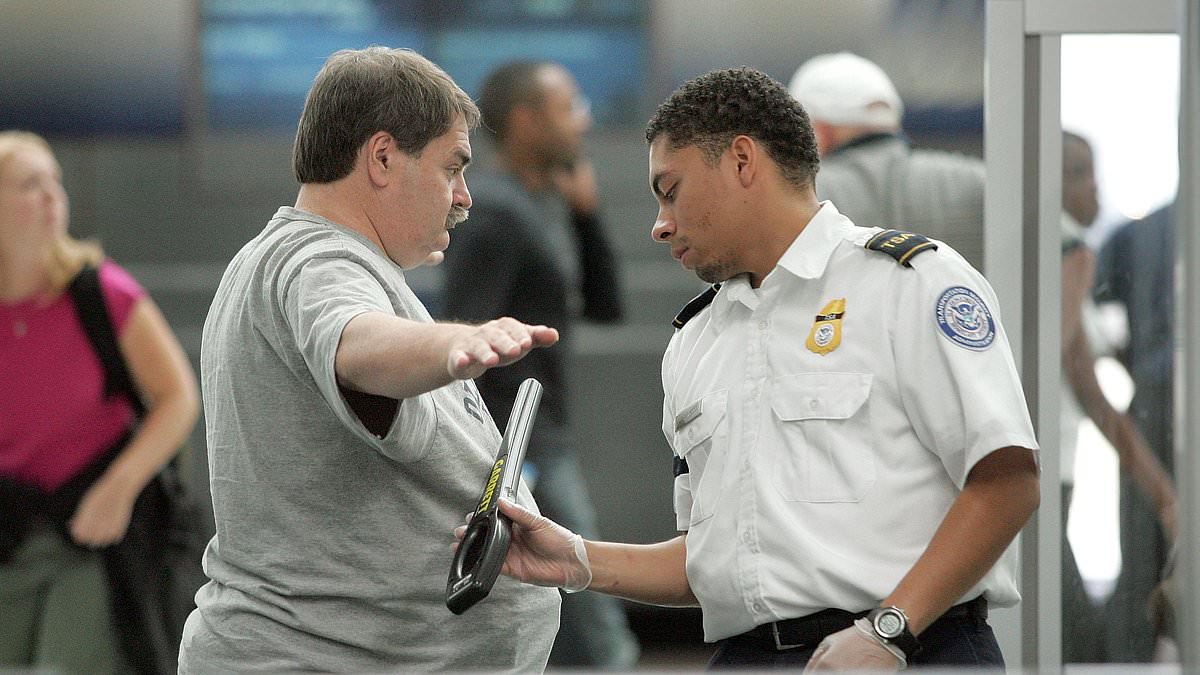The TSA is developing a high-tech tool that could revolutionize airport security: pat-downs using virtual reality gear that let agents ‘feel’ for threats – without ever laying a finger on passengers.
The concept, called the Wearable Sensor for Contactless Physical Assessment (WSCPA), is still in early development.
If approved, it would allow officers to employ VR headsets, haptic gloves, and touchless sensors to simulate the feeling of touch – helping them identify hidden objects without intruding on a passenger’s personal space.
‘The innovation uses touchless sensors to register the object’s contours and generate feedback to physically replicate the target object,’ according to a Department of Homeland Security overview of the project. ‘It enables physical sensation and assessment without direct contact.’
Here’s how it works: The WSCPA system scans the body using advanced imaging methods like millimeter wave, LiDAR, or backscatter X-ray.
That information is turned into a ‘contour map’ of the object or body part being examined.
This map is relayed to the glove, where haptic feedback – subtle vibrations or pressure – mimics the sensation of touching the mapped area in real time.
‘A user fits the device over their hand. When the touchless sensors in the device are within range of the targeted object, the sensors in the pad detect the target object’s contours to produce sensor data,’ the DHS said.
‘The contour detection data runs through a mapping algorithm… then relayed to the back surface that contacts the user’s hand through haptic feedback.’
The result is a virtual pat-down that still allows for a physical assessment – but one that’s private, contactless, and more dignified for passengers.
DHS describes several key advantages to the system, including the ability to ‘preserve privacy during body scanning and pat-down screening,’ ‘elevate user safety when assessing a potentially dangerous object,’ and ‘enhance situational awareness for visually impaired individuals.’
Beyond transportation security, DHS suggests the device could eventually be adapted for medical exams, visual assistance tools, and immersive educational programs.
The project is being led by TSA researcher William Hastings, and the DHS’s Office of Industry Partnerships is currently seeking commercial partners to help advance the technology.
It’s being offered for licensing through the agency’s Technology Transfer and Commercialization Branch (T2C).
The technology is currently in the ‘conceptual’ phase, according to DHS, but it is protected under a U.S. Patent Application.
Illustrations included in the patent show a user strapping the device to their hand and holding it near a body part or object to conduct a contactless assessment – a process that could one day replace the standard pat-down at TSA checkpoints.
If fully realized, the WSCPA system could offer a more respectful and streamlined experience for passengers while maintaining the effectiveness of airport security protocols.
Instead of being physically searched, travelers might one day be assessed by an officer using what amounts to virtual fingertips – all powered by sensors and simulation.
While it may sound futuristic, the TSA is actively exploring ways to bring this technology to life, signaling a broader shift toward noninvasive, tech-driven screening methods.
As DHS puts it, the WSCPA could provide ‘realistic virtual reality immersion’ while remaining ‘handheld and portable for use in small spaces.’
